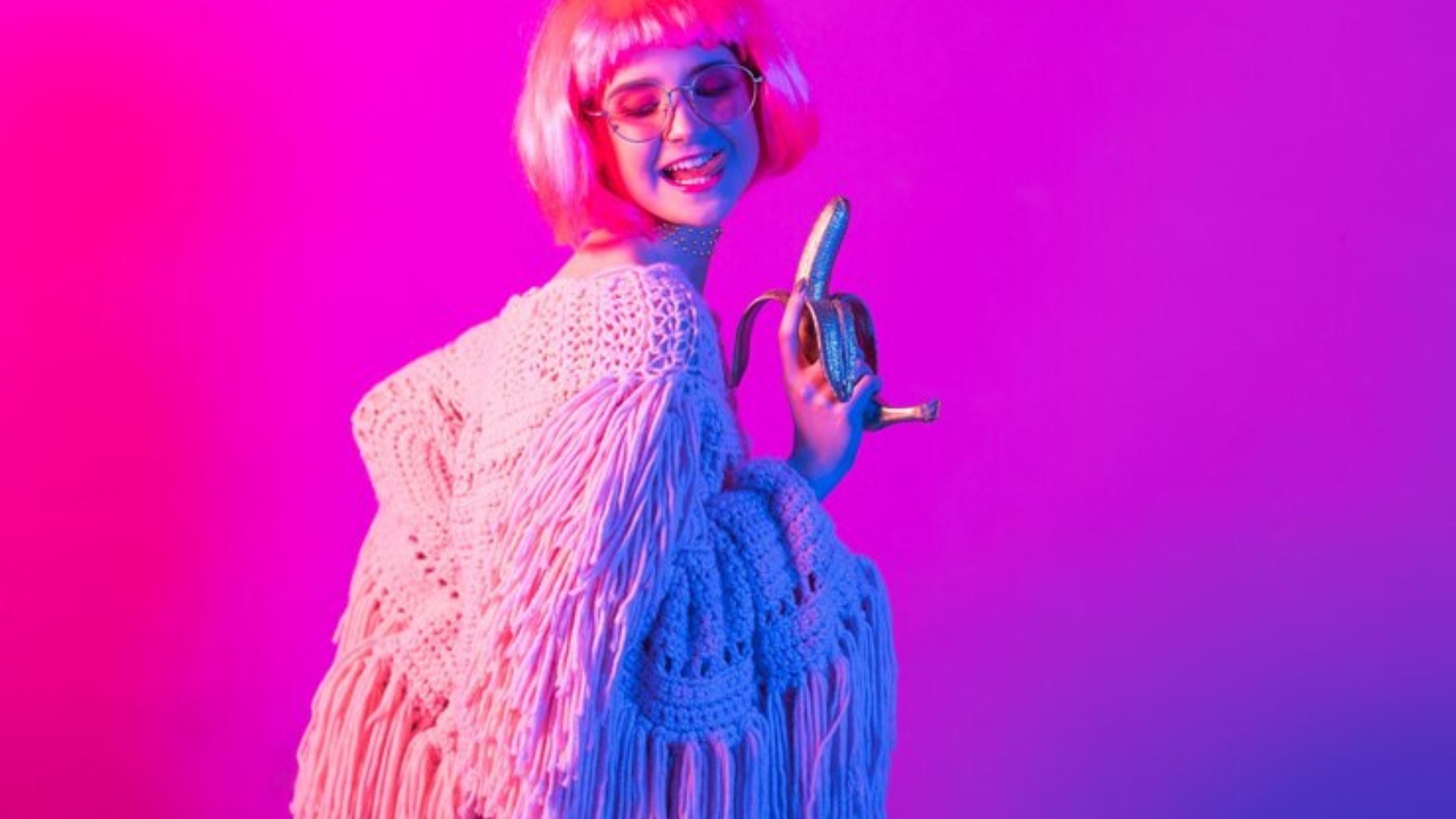1980s Neon Fashion: A Bold and Vibrant Style Revolution
The 1980s was a decade marked by excess, vibrancy, and bold self-expression, and nowhere was this more evident than in the neon fashion trends that took over during the era. Neon colors like fluorescent pink, lime green, bright yellow, and electric blue dominated fashion, creating a striking visual impact both on the streets and in pop culture. This style revolution was more than just a fleeting trend; it became a symbol of the energy, optimism, and rebellion that defined the ’80s. From the music scene to high-end fashion, neon hues were everywhere, and they continue to influence fashion today.
In this article, we will explore the origins of 1980s neon fashion, how it permeated different aspects of culture, and its lasting impact on modern style. Whether you lived through the decade or are just discovering its iconic looks, the 1980s neon fashion movement is an essential chapter in the history of style.
The Origins of 1980s Neon Fashion
The neon trend of the 1980s didn’t appear out of nowhere; it was the result of various cultural, technological, and social shifts that set the stage for such a bold aesthetic. One of the most significant factors was the rapid development of synthetic fabrics and dyes that allowed for the creation of bright, fluorescent colors. These new materials and dyes made neon clothing possible in a way that wasn’t available in previous decades.
In the early ’80s, the explosion of neon fashion was driven by the rise of new wave music, MTV, and the youth-driven pop culture revolution. Iconic artists like Madonna, Cyndi Lauper, and Prince embraced the use of neon in their wardrobes, making it synonymous with a new, energetic, and rebellious spirit.
Neon Fashion in the Music Scene
Music played a huge role in the rise of 1980s neon fashion. As music videos became more prominent with the launch of MTV in 1981, artists began to use fashion as a way to stand out and express their personalities. Neon colors were perfect for this, providing a way to capture attention in front of the camera.
Madonna, one of the most influential style icons of the ’80s, was frequently seen sporting neon-colored outfits. Her looks, often paired with lace, fishnets, and oversized accessories, became synonymous with the “Material Girl” image and defined the fashion of the era. Similarly, Cyndi Lauper’s playful, quirky fashion choices also included neon hues, emphasizing individuality and creative expression.
The music scene, with its glam, punk, and new wave subcultures, was one of the key drivers behind the neon trend. Punk rockers used neon to contrast their rebellious style with the darker, grungier elements of punk fashion, while new wave bands embraced bright, fluorescent colors to represent their futuristic and innovative sounds.
Neon Fashion in Movies and TV
Neon fashion also made its way onto the big screen, influencing how fashion was perceived in the 1980s. Films like Flashdance (1983) and The Breakfast Club (1985) helped cement neon as a symbol of youthful rebellion and freedom. In Flashdance, the iconic sweatshirt with the cut-out neckline was paired with neon-colored leg warmers, creating a look that defined ’80s street style.
In The Breakfast Club, the characters’ contrasting personalities were reflected in their clothing, and neon was used to highlight these differences. The bright colors served as a visual shorthand for the characters’ diverse identities, making neon a symbol of personal freedom and expression. These films, along with many others from the decade, helped popularize neon in mainstream fashion, making it a staple of ’80s pop culture.
Key Elements of 1980s Neon Fashion
The ’80s neon fashion was characterized by its bold and unconventional use of color, as well as oversized, exaggerated silhouettes. Here are some key elements that defined neon fashion during the era:
Bright Neon Colors
The most obvious feature of 1980s neon fashion was the use of fluorescent colors. Neon pink, lime green, electric blue, and bright orange were the hues that took over clothing, accessories, and even hairstyles. These bright shades were designed to grab attention, making individuals stand out in a crowd.
Layering and Mix-and-Match Styles
Layering was a major trend in ’80s neon fashion. Neon was often paired with contrasting colors, creating an energetic, dynamic look. For example, neon pink would be worn with neon green or yellow, resulting in a bold and eye-catching combination. Fashion was about expressing individuality, so clashing colors and patterns became a way to communicate personality.
Oversized Silhouettes
Another hallmark of ’80s fashion, including neon fashion, was the oversized silhouette. Baggy pants, oversized jackets, and massive shoulder pads were everywhere. The oversized style was designed to make a bold statement, symbolizing power and confidence. Neon clothing often exaggerated this look, with loose-fitting neon sweatshirts, windbreakers, and tracksuits becoming wardrobe staples.
Athletic Influence
The 1980s saw the rise of athleisure, and neon fashion was no exception. Neon-colored tracksuits, sneakers, and sweatshirts were a common sight. This trend was heavily influenced by the fitness craze of the ’80s, with exercise videos, aerobics classes, and gym culture becoming a big part of the mainstream. Neon athletic wear was not only functional but also fashionable, combining performance with bold style.
Statement Accessories
In the 1980s, accessories were often just as important as the clothing itself, and neon was no exception. Bright neon-colored accessories, including chunky plastic jewelry, neon belts, scrunchies, and fingerless gloves, were worn to complete the look. These accessories helped individuals express their personality and add an extra layer of drama to their outfits.
The Impact of 1980s Neon Fashion
The impact of neon fashion in the 1980s extended beyond just the clothes themselves. The era’s embrace of neon colors played a significant role in shaping how people viewed fashion and personal style. The bold use of neon colors encouraged people to take more risks with their clothing choices and embrace individualism. This was especially important in a decade marked by an explosion of youth culture, where rebellion and self-expression were key themes.
Furthermore, the neon trend influenced the way fashion was marketed. Advertisements and music videos began to feature neon aesthetics, further cementing its place in popular culture. Neon lights, which had been used in signage and nightlife for decades, were now making their way into fashion photography, providing a dramatic backdrop for photoshoots and campaigns.
Conclusion
1980s neon fashion was a vibrant and bold chapter in the history of style. It represented a decade of excess, experimentation, and rebellion, where youth culture and pop icons embraced bright, fluorescent colors as a way to express individuality. From the music scene to the streets, neon fashion was a defining feature of the ’80s, leaving a lasting impact that can still be seen in fashion today. The era’s love for neon reflects a period of optimism and excitement. Where personal expression was celebrated and individuality was at the forefront of fashion.
ALSO READ:What Is Pikruos.com? A Comprehensive Guide to the New Digital Platform
FAQs
Why was neon fashion so popular in the 1980s?
Neon fashion became popular in the 1980s due to the rise of new wave music, MTV. And youth culture’s desire for self-expression. Bright neon colors were bold, attention-grabbing, and a way for people to stand out.
What are some key elements of 1980s neon fashion?
Key elements include bright neon colors (like pink, green, and yellow), oversized silhouettes, layering. Athleisure-inspired styles, and statement accessories such as chunky jewelry and scrunchies.
How did music influence 1980s neon fashion?
Artists like Madonna, Cyndi Lauper, and Prince embraced neon in their wardrobes, influencing the fashion choices of their fans. MTV also played a significant role by showcasing these artists’ styles in music videos.
What was the role of neon in 1980s movies and TV shows?
Neon fashion in movies like Flashdance and The Breakfast Club helped define characters and their personalities. The use of neon highlighted individuality, freedom, and youthful rebellion.
Does 1980s neon fashion have any lasting influence?
Yes, 1980s neon fashion continues to influence modern streetwear and pop culture. The bright, bold colors are frequently seen in contemporary collections, music videos, and on social media influencers.







